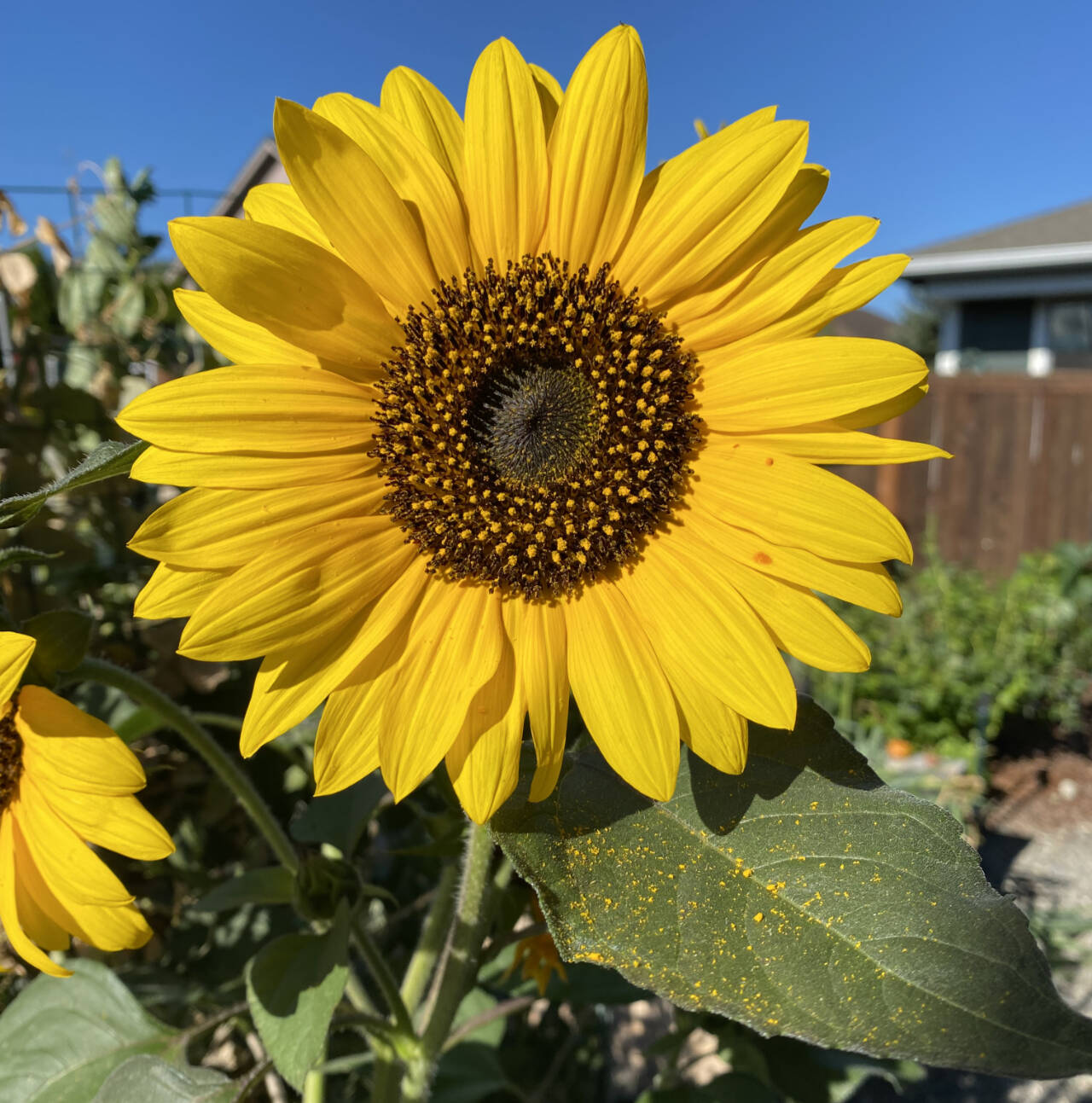Sunflowers (Helianthus annuus) are a beautiful addition to any garden and are relatively easy to grow on the North Olympic Peninsula. There are so many wonders of this fascinating plant. People and livestock have been eating it for thousands of years and every part of this plant is edible.
Did you know a wonder of the sunflower is the pattern of the seeds that follow the Fibonacci sequence, which is very closely aligned to the golden ratio (1.61803 … )? Artists and architects throughout the centuries have considered those shapes to be some of the most pleasing and beautiful and they tried to incorporate them into their designs as often as they could.
Another wonder of this plant is that they are known to be “heliotropic” — which means they can track the sun. Watch your sunflowers as they grow and pay close attention to the buds and flowers. Their heads follow the sun each day, but when they mature, their heads mostly face east. The reason is tied to insects. Most east-facing heads are warmer, which makes them more attractive to beneficial pollinators.
Sunflowers have been admired throughout the years, so they have been painted, drawn, sketched, sculpted, and more. There are even groups that have dedicated their focus only to sunflowers because of its beneficial presence in the garden. For instance, Guerrilla Gardening (GuerrillaGardening.org) is an international group whose focus is to take over small, public areas and grow and tend sunflowers.
An event called “International Sunflower Guerrilla Day” occurs May 1 of every year. Guerrilla Gardening encourages people worldwide to take some time each year on May 1 to plant a few sunflower seeds and tend them so they can grace our public spaces (as well as our gardens!).
Additionally, in 2012, sunflower seeds were taken into space by U.S. Astronaut Don Pettit. He discovered that growing plants in outer space makes them look very unusual — long and leggy. This research also expanded our understanding of how gravity and light affects the life cycle of food producing plants.
Edible sunflowers
Sunflowers are not only a beautiful addition to any garden, but every part of them is edible! There are endless recipes that include all parts of the plant. In antiquity it was a staple native to North America, but today sunflowers are consumed globally.
While we are all probably familiar with eating sunflower seeds or oils, here are some additional recipes:
• Roots: Steam young roots. A species of sunflowers is the Sunchoke, which is also known as a Jerusalem Artichoke. The roots can also be shredded to make slaw.
• Sprouts: Sunflower shoots can be used the same way any salad sprout is used.
• Stalks: Young stalks can be peeled and have the taste and texture of celery.
• Leaves: Can be eaten raw, boiled, or baked like kale leaves.
• Petals: Petals provide color and a bittersweet flavor that complements sweet foods.
• Buds: Pick flowers early in the bud stage then steam and serve with melted butter.
• Seeds: The seeds are ready when the back of the head has turned from green to yellow. The seeds can be eaten raw or roasted. To roast them, soak them in salted water overnight then roast in a 300-degree oven for several hours. Seeds can also be ground into powder then kneaded into seed butter.
• Grilled Heads: Use giant heads that still have tiny flowers but not fully hardened seeds. Remove all the flowers and rub with a good oil. Grill face down five minutes then flip and grill another five minutes. Eat like corn on the cob.
• Oil: Black sunflower seeds that have been shelled are used and ground into a paste. The paste is then kneaded until oil appears. The oil is strained and can be stored up to one month.
To grow these wonders:
• Sunflowers need up to six hours of sunlight daily.
• Sunflowers do well in most soils but prefer well-drained soil that contains compost or rotted manure.
• Sow when all danger of frost has disappeared and soil temperature is at least 50 degrees.
• Sow seeds throughout the month of June for continuous blooming.
• Sunflowers come in many colors and sizes from dwarfs to giants. Giants make the best flowers for grilling.
The National Sunflower Association is a nonprofit farmer organization that celebrates all things sunflowers at sunflowernsa.com. They publish a plethora of sunflower-related articles and publications.
I hope you decide to plant several varieties of sunflowers this year so you can marvel at all the things you can do with them.
What a wonder this plant is. Happy planting!
Kendra Waggoner is a Clallam County Master Gardener.


